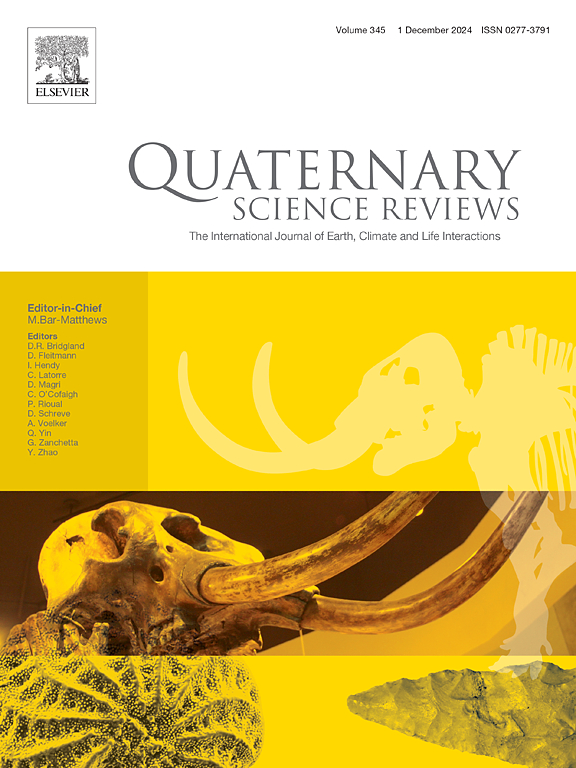A novel mean-value-based approach for correcting radiocarbon age anomalies in terrestrial gastropods: Insights from the Tibetan Plateau
IF 3.2
1区 地球科学
Q1 GEOGRAPHY, PHYSICAL
引用次数: 0
Abstract
Terrestrial gastropod shells are abundant in loess deposits and represent a promising alternative material for radiocarbon dating. However, accurately correcting radiocarbon age anomalies caused by the limestone effect in shells remains a critical challenge. In this study, we report new radiocarbon ages of gastropod shells and charcoals from two loess sequences on the Tibetan Plateau. Cathaica rossimontana exhibits a mean offset of 1788 ± 240 years, while Vollonia tenera shows an average age anomaly of 997 ± 227 years. By integrating stratigraphic and modern surveys, we demonstrate that the same species gastropods under stable environments exhibit a concentrated limestone effect with a low coefficient of variation (0.10–0.22). Based on this theoretical foundation, we propose a novel correction method for age anomalies using linear regression modeling and average limestone effect. The corrected radiocarbon ages of gastropod shells show excellent agreement with reliable charcoal ages in the BST and GG loess sections, validating the reliability and robustness of the proposed method. Compared to conventional modern-value correction approach, the mean - value correction method offers significant advantages, including broader applicability and greater reliability. These findings advance the potential of gastropod shells as reliable chronological markers in Quaternary loess research.
一种基于均值的校正陆生腹足类动物放射性碳年龄异常的新方法:来自青藏高原的见解
黄土沉积物中陆生腹足类贝壳丰富,是一种很有前途的放射性碳定年替代材料。然而,准确校正由贝壳中的石灰岩效应引起的放射性碳年龄异常仍然是一个关键的挑战。本文报道了青藏高原两个黄土层序腹足类贝壳和炭的新放射性碳年龄。Cathaica rossimontana的平均年龄异常为1788±240年,Vollonia tenera的平均年龄异常为997±227年。结合地层学和现代测量,我们发现在稳定环境下,同一种腹足类动物表现出集中的灰岩效应,变异系数较低(0.10 ~ 0.22)。在此理论基础上,提出了一种基于线性回归模型和平均石灰岩效应的年龄异常校正方法。校正后的腹足类贝壳放射性碳年龄与BST和GG黄土剖面的可靠碳年龄具有良好的一致性,验证了所提出方法的可靠性和鲁棒性。与传统的现代值校正方法相比,均值校正方法具有适用性更广、可靠性更高等显著优点。这些发现促进了腹足类贝壳在第四纪黄土研究中作为可靠的年代标志的潜力。
本文章由计算机程序翻译,如有差异,请以英文原文为准。
求助全文
约1分钟内获得全文
求助全文
来源期刊

Quaternary Science Reviews
地学-地球科学综合
CiteScore
7.50
自引率
15.00%
发文量
388
审稿时长
3 months
期刊介绍:
Quaternary Science Reviews caters for all aspects of Quaternary science, and includes, for example, geology, geomorphology, geography, archaeology, soil science, palaeobotany, palaeontology, palaeoclimatology and the full range of applicable dating methods. The dividing line between what constitutes the review paper and one which contains new original data is not easy to establish, so QSR also publishes papers with new data especially if these perform a review function. All the Quaternary sciences are changing rapidly and subject to re-evaluation as the pace of discovery quickens; thus the diverse but comprehensive role of Quaternary Science Reviews keeps readers abreast of the wider issues relating to new developments in the field.
 求助内容:
求助内容: 应助结果提醒方式:
应助结果提醒方式:


